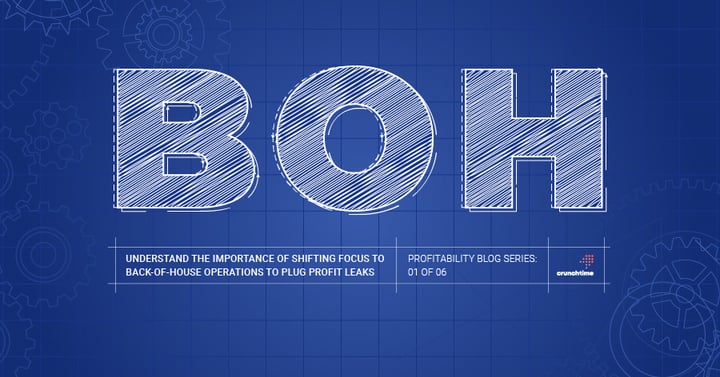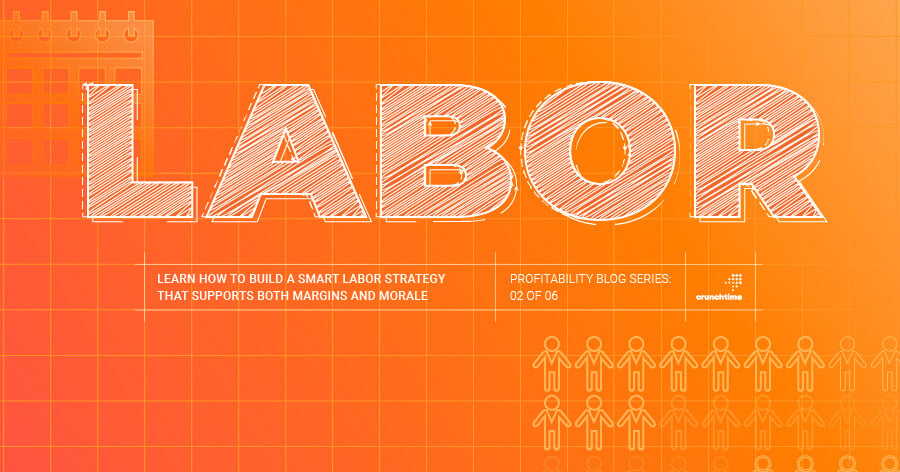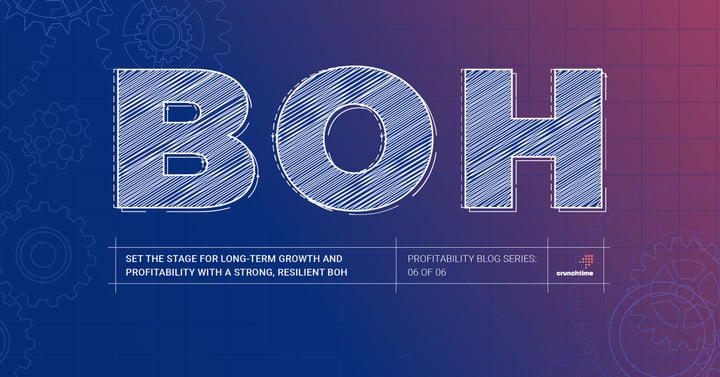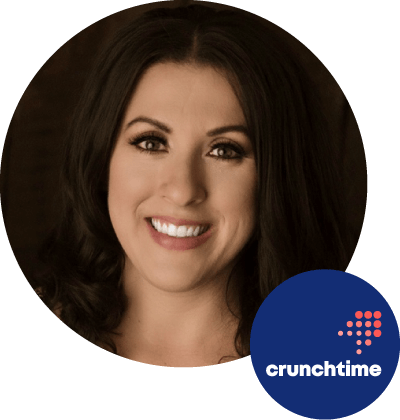
- Home
- Crunchtime Blog
- Part 2: A Profit-First Approach to Resilient Restaurant Operations

Part 2: A Profit-First Approach to Resilient Restaurant Operations
This is the second installment in our series on boosting profitability and building resilience in your restaurant operations. In our previous blog, we explored the importance of shifting focus to back-of-house (BOH) operations to plug the leaks in your profit bucket. Now, we're diving deeper into one of the most significant areas of inefficiency: labor management. Let’s take a closer look at how optimizing your labor and scheduling can make a big difference in your profitability.
Labor is one of the largest controllable expenses—and yet, it’s one of the most frequently mismanaged. Getting labor right is critical for maintaining profitability, especially when the economic climate is uncertain. Unfortunately, many restaurant leaders are pouring money into strategies designed to boost sales while ignoring the root of their financial struggles: inefficiencies in labor management.
Inaccurate scheduling is a sneaky profit killer. When schedules are based on guesswork rather than data-driven forecasts, overstaffing, underperformance, and overtime costs quickly add up. The result? You’re spending more than necessary on labor, often at the expense of your customer experience.
The problem is compounded by the all-too-common tendency to patch up these labor costs with short-term fixes. Operators might increase menu prices or ramp up front-of-house (FOH) sales initiatives, thinking these strategies will solve the issue. However, without controlling labor inefficiencies, these fixes only mask the problem—they don’t solve it.
Why FOH Alone Can’t Plug Labor Leaks
Many restaurant operators rely on FOH systems like POS software to track sales and manage transactions. But these systems fall short when it comes to predicting labor needs in real time. While POS systems are excellent at capturing what’s being sold, they fail to account for the nuances of labor forecasting and scheduling. In other words, they don’t tell you how many staff members you’ll need based on real-time sales trends, weather, local events, or even seasonal fluctuations.
That’s where the gap lies. FOH systems are focused on sales data, but they don’t integrate the operational side of the business—the back of house (BOH). And without this key connection, operators are left with inaccurate forecasts, leading to either overstaffing or understaffing. Both are costly and inefficient.
How Labor & Scheduling Optimization Directly Impacts Profitability
The good news is that with the right tools, you can plug the labor leak and significantly boost profitability. The key lies in optimizing your labor and scheduling processes. By embracing data-driven scheduling, you ensure that you have the right number of people working at the right time—no more, no less.
Accurate labor forecasting can reduce unnecessary costs without sacrificing service quality. In fact, when schedules are aligned with real-time data, your restaurant can run more smoothly, employees can work more efficiently, and customer service improves. When labor efficiency improves, you can achieve faster service, higher order accuracy, and ultimately, more satisfied customers who are more likely to return.
Four Key Action Steps to Prioritize
1) Plug the Labor Leak
It’s tempting to pour money into sales-boosting initiatives, but unless your labor is optimized, it's like trying to fill a bucket with a hole in it. Inefficient scheduling can drain your profits no matter how much revenue you bring in.
2) Implement Labor Management Software
Use labor management software that integrates seamlessly with your BOH data for accurate forecasting. This ensures that you can predict the labor needs for your business in real time based on actual data trends, not guesswork.
3) Monitor Labor as a Percentage of Sales
Keep an eye on labor costs as a percentage of your total sales, and track this in real-time. This allows you to catch cost leaks early and take corrective action before they spiral out of control.
4) Schedule Proactively
Don’t wait for the day to unfold—plan your schedule based on factors like anticipated sales patterns, weather forecasts, and local events. This way, you can ensure you’re adequately staffed during busy periods and avoid overstaffing during slower times.
Focusing on FOH systems to drive revenue is important, but it won’t solve the underlying labor inefficiencies that drain your profits. By optimizing your labor and scheduling strategy, you can ensure that your restaurant runs more efficiently, your employees are happier, and your margins grow—no matter what the economy throws your way.
Stay tuned for the next blog in our series, where we’ll dive into how operations execution impacts profitability and how you can streamline your processes for long-term success. In the meantime, check out our guide to Navigating Labor Cost Control to start improving your labor management today.
Share this post
Related


Part 5: A Profit-First Approach to Resilient Restaurant Operations



